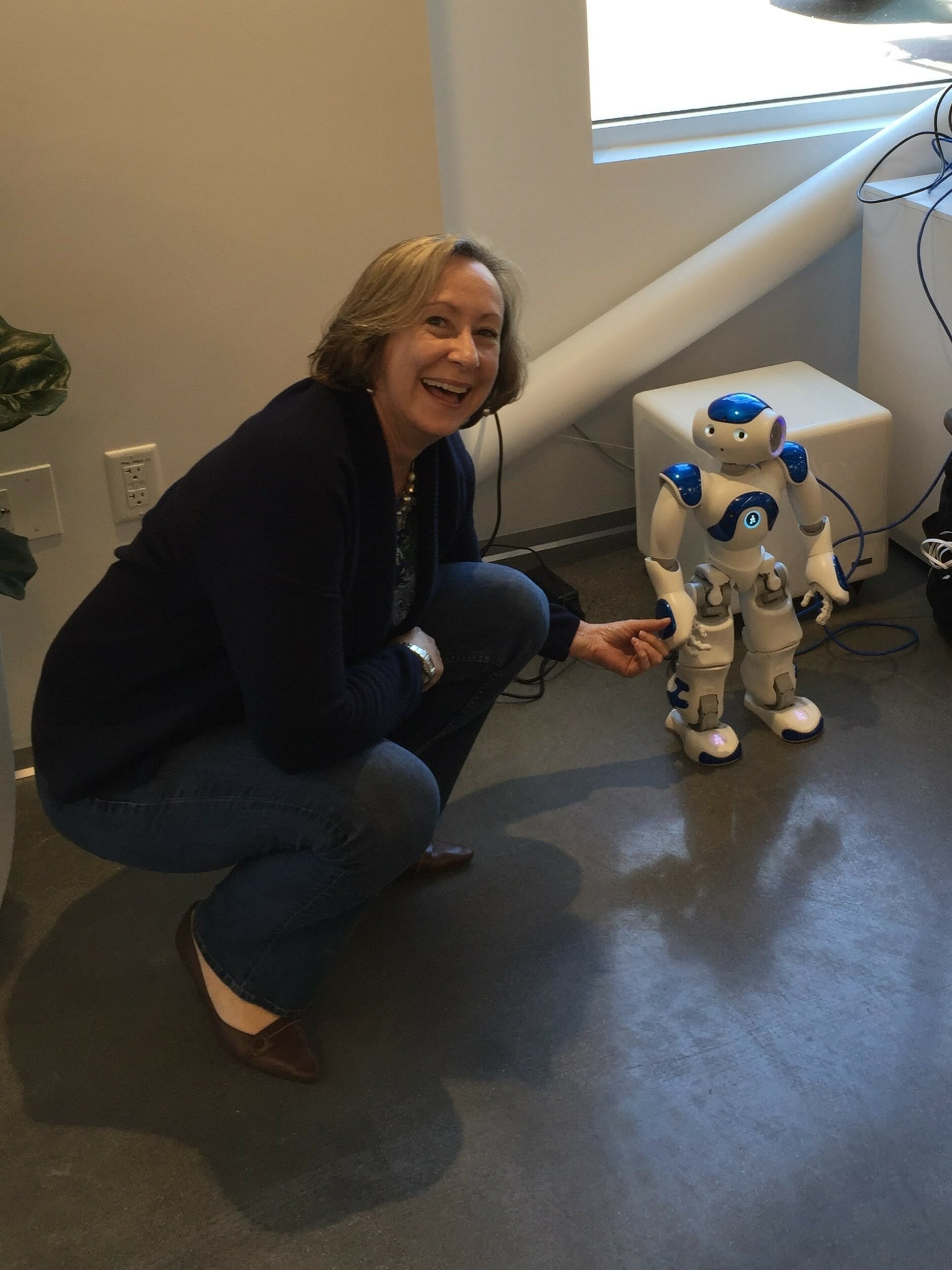Dec 07, 2018
He’s awfully darn cute, but is he worth it?
A recent article in the NY Times describes the use of a robot named Zora at an elder care hospital in France. I had the privilege of meeting one of these robots in a Silicon Valley innovation center a couple of years ago. As you can see from the delight on my face, he’s cute as a button and makes everyone happy. And, he’s easy to anthropomorphize! But, how useful was he in elder care? The results might surprise you.
First, the facts. The robot costs up to $18,000 and requires controlling from a laptop by a person – an impractical expense, considering the affordable senior alert systems and elderly care apps that are available now. While the robot does an excellent job at engaging the senior residents – getting residents to confide things they wouldn’t tell a caregiver – and in leading exercise classes, it doesn’t substitute for care activities and doesn’t help residents with activities of daily life. It also requires human supervision 100% of the time, and frequent battery charges.
The article further states, “In Australia, a hospital using a Zora robot studied the effects on patients and staff. The researchers found that it improved the mood of some patients, and got them more involved in activities, but required significant technical support.”
Another approach was taken here in California that seems more effective. The Elder Care Alliance tested a simpler social robot that does not need to be run by a human. The seniors reacted to it with the same level of emotional connection, and the robot was able to perform some useful services. “Social robots might provide a means for getting information from those who can’t verbally express themselves; the question of how this technology can help improve – quality of life continues to be explored.”
“Partridge brought the social robot into a memory care unit. Later that day, a resident asked for it to call his family, then proceeded to engage in a long conversation about the robot.”
While I’m a big fan of how cute robots are, to me it seems like we are at the beginning of a long road. According to The New York Times, “The challenge will be creating machines capable of doing more complex jobs. Lifting a patient’s mood with a song is different from providing health care.”
Forward thinking is invaluable and necessary, and lifting people’s moods and combating social isolation are two very important missions for overall longevity and health. But what if the investment in future robotic technology is also put towards affordable and useful technology that can directly helped caregivers to do their jobs more efficiently and effectively today? We all know the caregiver crisis has arrived. Technology is the one big lever this industry has not pulled, and proven solutions to provide more healthcare assistance and caregiving coverage using remote monitoring solutions like elderly care products such as Alzheimer’s and dementia wearable technology and tracking bracelets available today.
We need to keep our eye on the ball of making technology solutions that both delight and perform useful functions for the ever-stretched caregivers.


